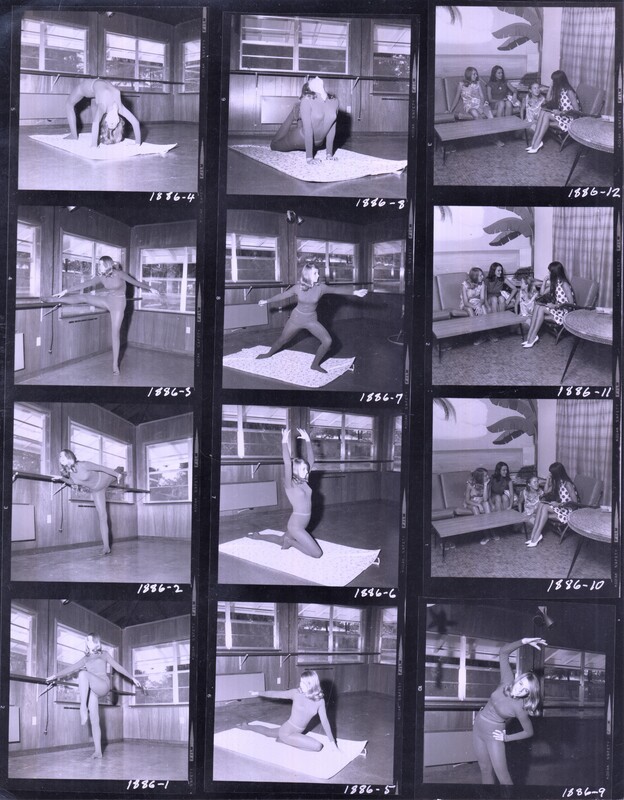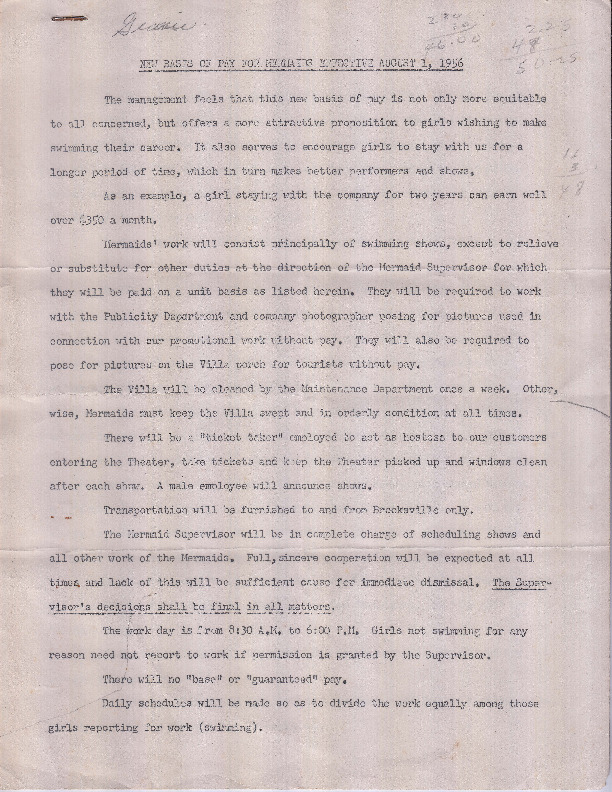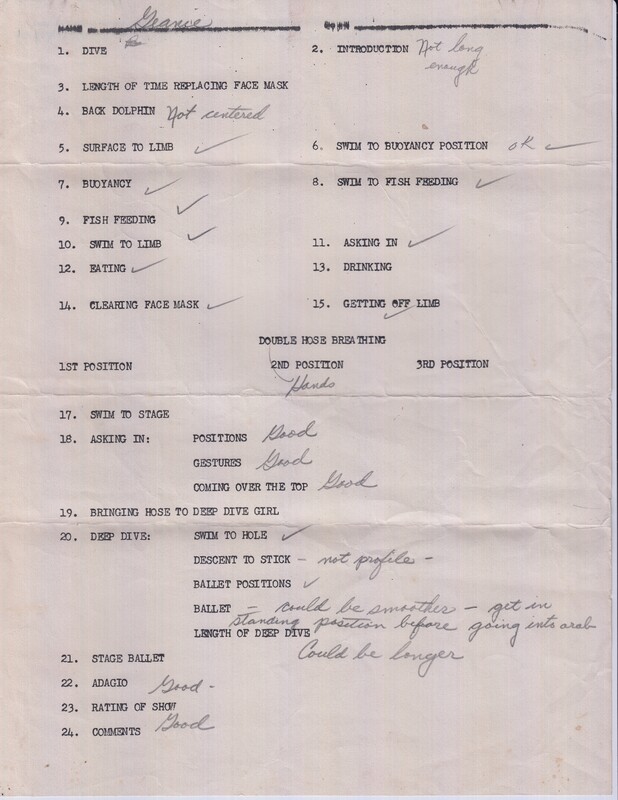Training
Getting accepted after interviewing for the position was the easy part of starting out at Weeki Wachee Springs. Training could take four to six weeks to complete, and not everyone made it all the way through. After 1956, established mermaids were given incentives to train new hires: $25 if the trainee didn't make the cut, or $100 when the trainee performed in their first show. Trainees were given room and board as well as $75 a month. Whether someone passed or not depended on many different factors.
Becky Young's experience in competitive swimming gave her a leg up in training: "I started doing shows about three and a half, four weeks after I got here. Uh, I was very comfortable in the water and that helped. But learning the air hose was a challenge and the way that we conquered that was that I spent a week underwater watching three shows a day, breathing on the air hose. And generally we went in three times a day. So um, I just worked hard and wanted to learn everything fast."
Lydia Dodson was trained by Trudy Bano: "I was the last one. She started in the 60s and I was the last one before she retired... She was a wonderful trainer." Crystal Robson also praised the woman who trained her, "Carrie Wilson, my trainer, was just an angel and she went on to be in theater and all of that. And she had just a wonderful demeanor about her. And expressive. She was a very great actress and she taught me well. She was really so sweet and kind and very sensitive."
Emelia Smith was a strong swimmer, but she struggled during training to breathe using the air hose: "It was a real challenge to learn to breathe from the air hose. And to take your mask off underwater. I almost didn't make it, I couldn't do it. And my trainer said, 'You'll never learn this!' And she was my very best friend all through high school. She said, 'You're never going to learn this, I'm tired, I'm through with you.' And she walked away from me and then I realized she was serious. I really had to do this. And I ducked down, turned on my air hose, took a breath, took my mask off and that was it."


